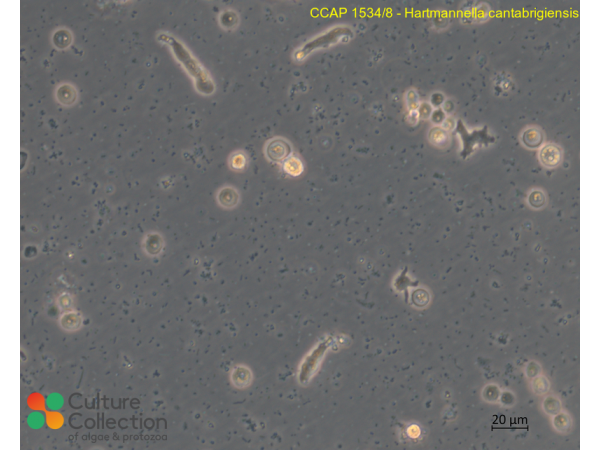References [ 3 ]
Brown MW, Silberman JD & Spiegel FW (2011) "Slime Molds" among the Tubulinea (Amoebozoa): Molecular systematics and taxonomy of Copromyxa Protist 162: 277-287.
Boucard TK, Parry J, Jones K & Semple KT (2004) Effects of organophosphate and synthetic pyrethroid sheep dip formulations on protozoan survival and bacterial survival and growth Fems Microbiology Letters 47: 11-127.
Fahrni JF, Bolivar I, Berney C, Nassonova E, Smirnov A & Pawlowski J (2003) Phylogeny of lobose amoebae based on actin and Small-Subunit Ribosomal RNA genes Molecular Biology and Evolution 20(11): 1881-1886.
Division/Phylum: Amoebozoa Class: Tubulinea
Note: for strains where we have DNA barcodes we can be reasonably confident of identity, however for those not yet sequenced we rely on morphology
and the original identification, usually made by the depositor. Although CCAP makes every effort to ensure the correct taxonomic identity of strains, we cannot guarantee
that a strain is correctly identified at the species, genus or class levels. On this basis users are responsible for confirming the identity of the strain(s) they receive
from us on arrival before starting experiments.
For strain taxonomy we generally use AlgaeBase for algae and
Adl et al. (2019) for protists.
| Attributes |
| Authority | Page 1974 |
| Isolator | Page (1972) |
| Collection Site | ditch King's College, Cambridge, England |
| Climatic Zone |
Temperate |
| Notes |
Isolation: plating; clonal; cystformer |
| Axenicity Status |
Monoxenic |
| Area |
Europe |
| Country |
UK |
| Environment |
Freshwater |
| GMO |
No |
| Group |
Protozoa |
| In Scope of Nagoya Protocol |
No |
| ABS Note |
Collected pre Nagoya Protocol. No known Nagoya Protocol restrictions for this strain. |
| Collection Date |
c 1972 |
| Original Designation |
123 |
| Pathogen |
Not pathogenic: Hazard Class 1 |
| Strain Maintenance Sheet |
|
| Toxin Producer |
Not Toxic / No Data |
| Type Culture |
Yes |
| Taxonomy WoRMS ID |
|
| Synonyms |
Copromyxa cantabrigiensis
|

